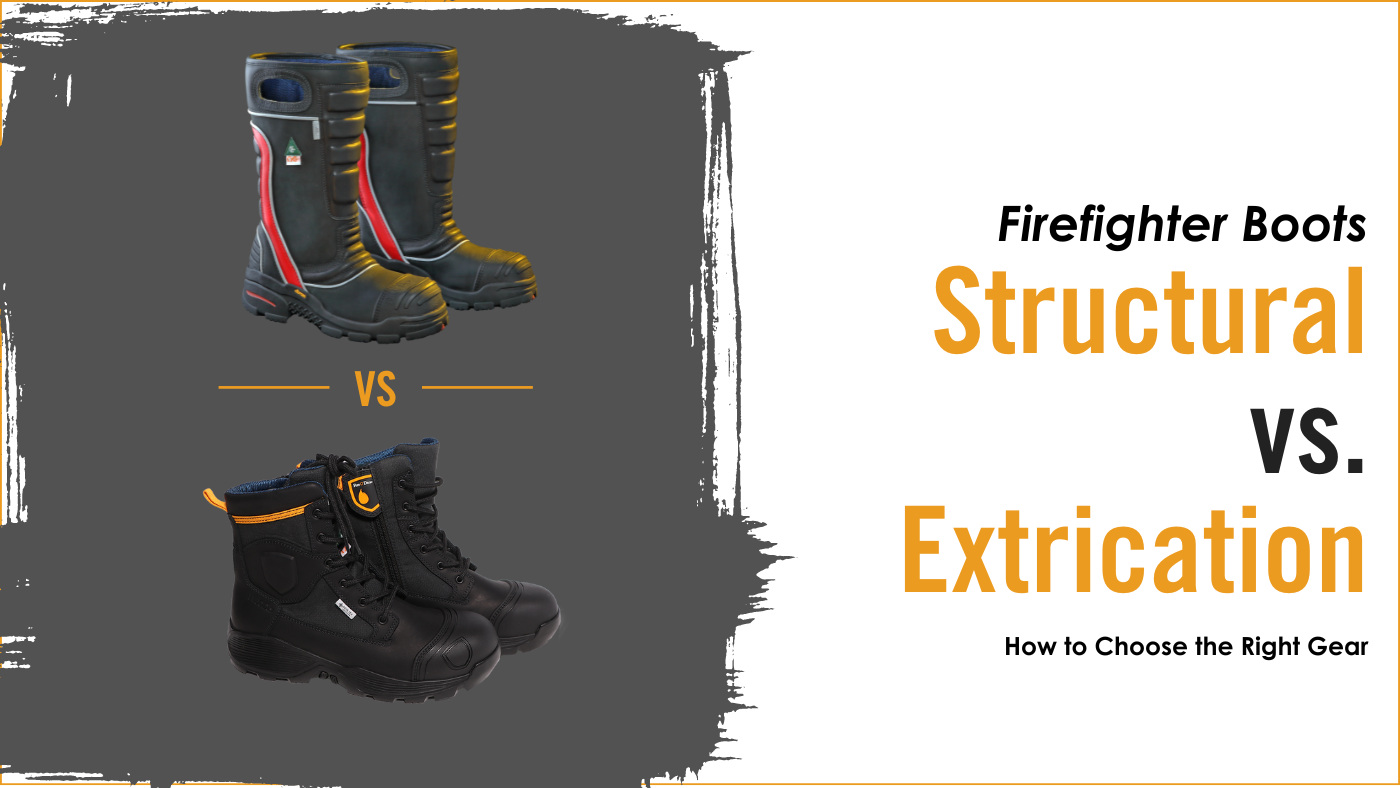Firefighters respond to a lot of different calls. From structural fires to MVAs to natural disasters to gas leaks, no day is ever the same.
Just like you have options for alternative PPE and gloves, there are also different boots to consider. So why would you need different kinds of boots, and which ones are right for which calls?
The Importance of Firefighter Boots
In your lifetime, you’ll walk about 115,000 miles. That’s like walking around the world more than 4 times.
Most of those miles will be outside your role as a firefighter, but it’s safe to say that a lot of them will be. And those miles are definitely harder on your feet than other situations. From climbing ladders to running up stairs to carrying heavy equipment, your feet take a beating during calls.
According to NFPA, 36% of injuries on the fireground are related to sprains, strain, or muscular pain. Good boots are a critical piece of protection against those injuries.
It’s also no secret that firefighters face the danger of overheating because of protective gear. The foot has over 250,000 sweat glands, more sweat glands than any other place on the body. Boots are great for protection, but not so great for letting that sweat cool you down.
Trapped sweat in your boots is a big deal. Wet skin conducts heat far more than dry skin, increasing your risk of overheating. It also increases your risk of infection (e.g., athlete’s foot, fungal infections) and can also cause soreness and discomfort.
That means a good boot has to do a lot. It has to protect you from burns, punctures, blood, mud, contaminants, sprains, falls, slips, and a whole host of other issues. But it also has to be breathable enough to let your sweat out and light enough that you don’t exhaust yourself just walking.
Extrication Boots vs. Structural Boots
Choosing the right firefighter boot is all about balancing protection and comfort. That’s why it doesn’t make any sense to only have one boot for every job.
Structural Boots
For your most dangerous calls, structural boots like the Fire-Dex FDXL200 or FDXR100 are always the right call. These boots should conform to NFPA 1971 (structural fires) and NFPA 1992 (hazardous materials emergencies).
 Structural boots are designed to protect you from heat and burns, punctures, hazardous liquid splashing, or whatever else a structural call might bring your way. When you choose a pair of structural boots, look for features such as:
Structural boots are designed to protect you from heat and burns, punctures, hazardous liquid splashing, or whatever else a structural call might bring your way. When you choose a pair of structural boots, look for features such as:
- Temperature resistance: Choose top-tier materials to get the best performance out of your structural boots
- Puncture and impact protection: From toe to heel, the boot should protect your whole foot and provide extra protection where it matters (e.g., toe caps, steel shunts)
- Slip resistance: The last thing you want in a fire is to slip around; choose boots with patterns and materials that will keep you on your fight—no matter what environment you’re in
- Water resistance: NFPA sets standards for water and chemical resistance, so look for boots that meet (or even exceed) those standards
Even so, you should still look for boots that maximize breathability and reduce weight. Also consider factors like how easy it is to don and doff the boots or if the boot is flexible enough for you to move in. If you’re fighting a fire, you shouldn’t also be fighting your gear.
Extrication Boots
Since 1980, fire calls have decreased by 54% while EMS calls have increased by 521%. That means most of your calls aren’t structural fire related.
Responding to non-fire emergencies calls for greater gear flexibility. Where structural boots are typically heavier and less breathable, extrication boots have a lot more flexibility.
The main advantage of extrication boots is that they offer more in the way of comfort and breathability. Wearing structural boots to non-structural calls increases your risk of fatigue and injury. You wouldn’t want to wear heavy turnouts to an elevator rescue, so why would you also want to wear heavy structural boots?
Extrication boots come in a variety of options, but can generally be used for non-structural calls like:
- Structural Collapse
- Rope and High-Angle Rescue
- Search and Rescue
- Confined Space Rescue
- MVA/Vehicle Extrication
- Trench Rescue
- EMS Calls
- Carbon Monoxide Incidences
- Electrical Emergencies and Outages
- Water Emergencies and Rescues
- Natural Disasters
- Gas Leaks
- Ice and Cave Rescue
- Civilian Assistance
When shopping for an extrication boot, consider things like: 
- Certification: Does the certification meet the need of your call? Consider a dual-certification boot that will allow you to respond to more calls with the same gear.
- Comfort: Is the boot light enough to wear all day? Extrication boots can weigh far less than structural boots, so find one that is comfortable enough to wear for long period of time.
- Breathability: Extrication boots can offer different materials that make the boot more breathable. This keeps your feet drier and more comfortable.
- Slip resistance: Just because it’s a non-structural call doesn’t mean you should skip out on a good sole—slip resistance is just as important for extrication boots.
The bottom line is extrication boots offer you greater flexibility for 90% of your calls. They’re a valuable tool in any firefighter’s arsenal.
The Right Gear for the Right Job
Your gear is sometimes all that stands between you and serious injury. But sometimes it’s also what stands between you and being comfortable enough to do your job well.
Every call is different, and you need the right tool to do that job effectively. Having access to both a structural and extrication boot will allow you to respond to each job appropriately.






Leave a Reply